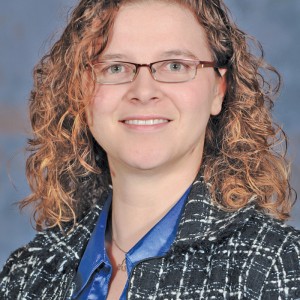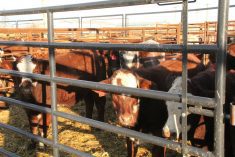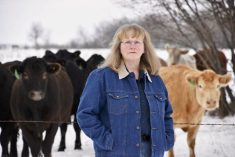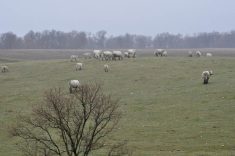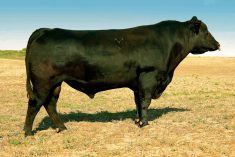Cattle herd expansion was one of the biggest ‘will they or won’t they’ stories in 2014 — and that little plot line will continue to play out in 2015.
“Right now, we’re still in the consolidation phase,” said Brenna Grant, research manager at Canfax. “Inventories are going to be stable on Jan. 1, 2015, and we’re going to be looking at modest growth of one to two per cent.”
That growth won’t come entirely from heifer retention, as was initially expected.
“It’s looking like we’re going to have lower cow slaughter in 2015 to support cow numbers,” she said. “That’s something that we saw happen in the U.S. in 2014, and it’s something that we’re starting to see in Canada in October and November.”
For the last two years, beef cow culling rates have been high — 14 per cent in 2013 and 13 per cent in 2014 — and any additional drops in those numbers will be “modest.”
“We’ve actually got quite a ways to go before we see cow slaughter drop in order to get that beef cow culling rate below the long-term average of 11 per cent,” said Grant.
“We saw this drop a little bit by one per cent in 2014, and we could see basically another one per cent or two per cent drop. It’s pretty modest in terms of expansion.”
Still, the cattle industry will need to see “quite a big move in heifer retention” before any meaningful expansion will take place.
“It takes a longer time to rebuild your herd when you’re retaining cull cows because there are some challenges with retaining those older cows,” she said. “You might get that extra year out of them, but they may also require more labour and be a little bit more work as well.”
Read Also

Pig transport stress costs pork sector
Popular livestock trailer designs also increase pig stress during transportation, hitting at meat quality, animal welfare and farm profit, Agriculture and Agri-Food Canada researcher says
Cash flow is another factor that’s slowing a bounce-back in cattle numbers.
“One of the biggest things about expansion is it very much limits your cash flow as you’re investing in the future,” she said. “Particularly if you’re looking at retirement. Do you really want to be tying up cash flow in an expansion?”
Older producers are “rebuilding equity first and foremost after 10 very difficult years,” said Grant.
“They may love this industry and they may be really optimistic, but they’re not adding more cows because that’s not where they are in their life. They may be staying in the industry, but they’re not necessarily looking for that additional work that comes with expansion.”
For young producers, increasing by “five or 10 per cent this year just isn’t viable.”
“They’re sticking to their long-term plan of getting another piece of land, getting the grass, and getting the cows to go with it — sticking to that long-term, slow growth that they have planned out.”
And many producers are still jittery — and oddly enough, sky-high prices are contributing to that.
“At these much higher prices, the dollars per head on the line are that much greater,” said Grant.
“With that, you need to be really confident that you’re going to have that return — not just next year or the year after.
“Cows are a long-term investment, and they need to make money over their lifetime.”







